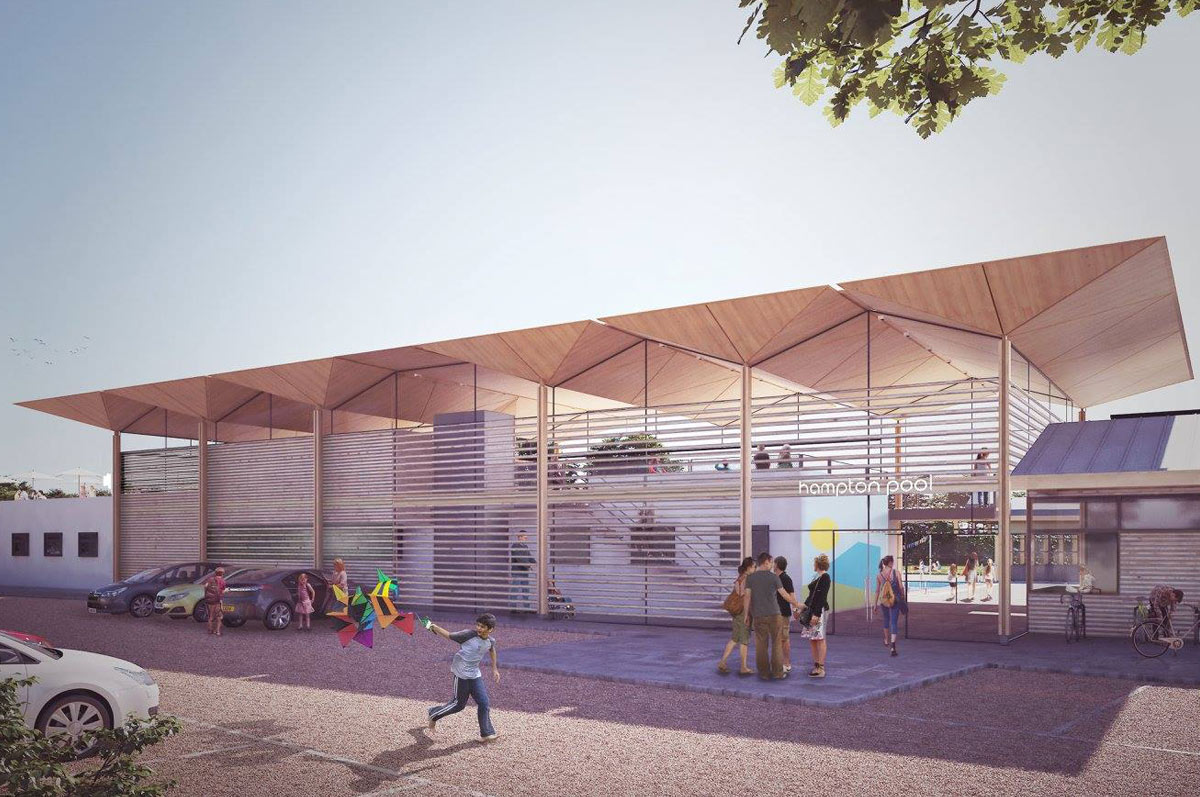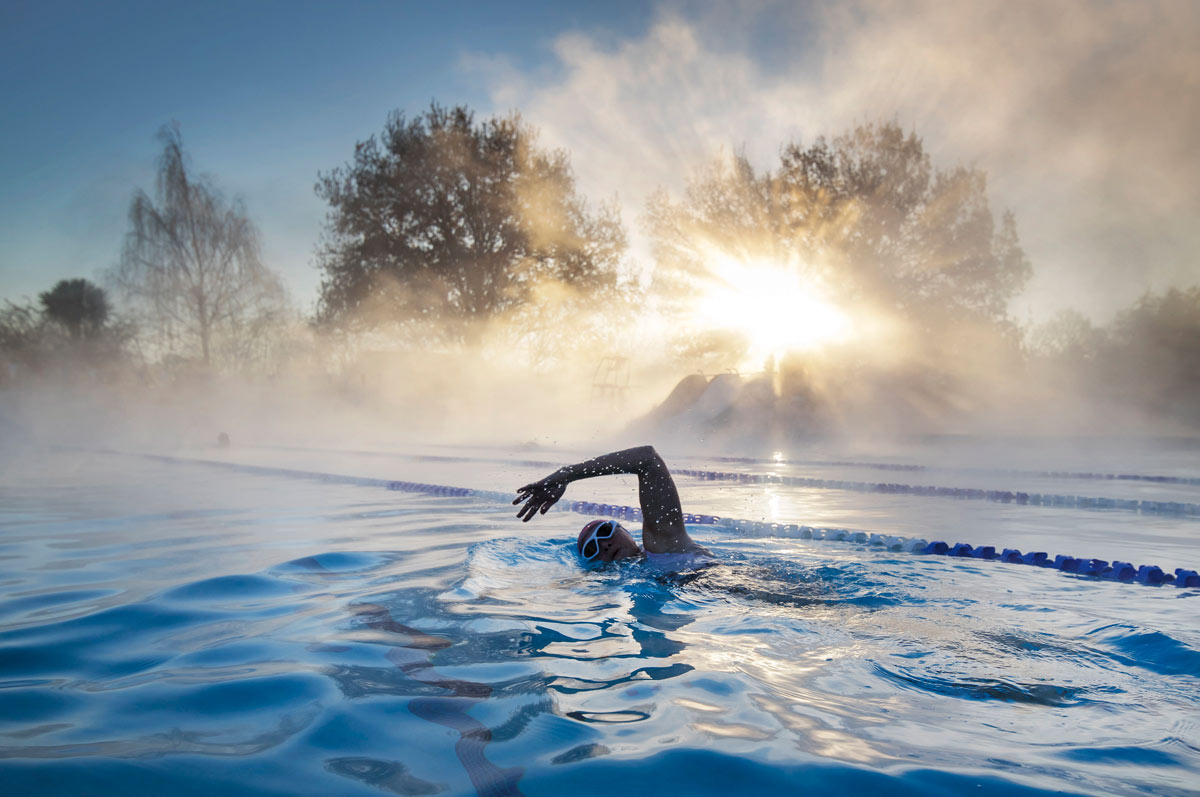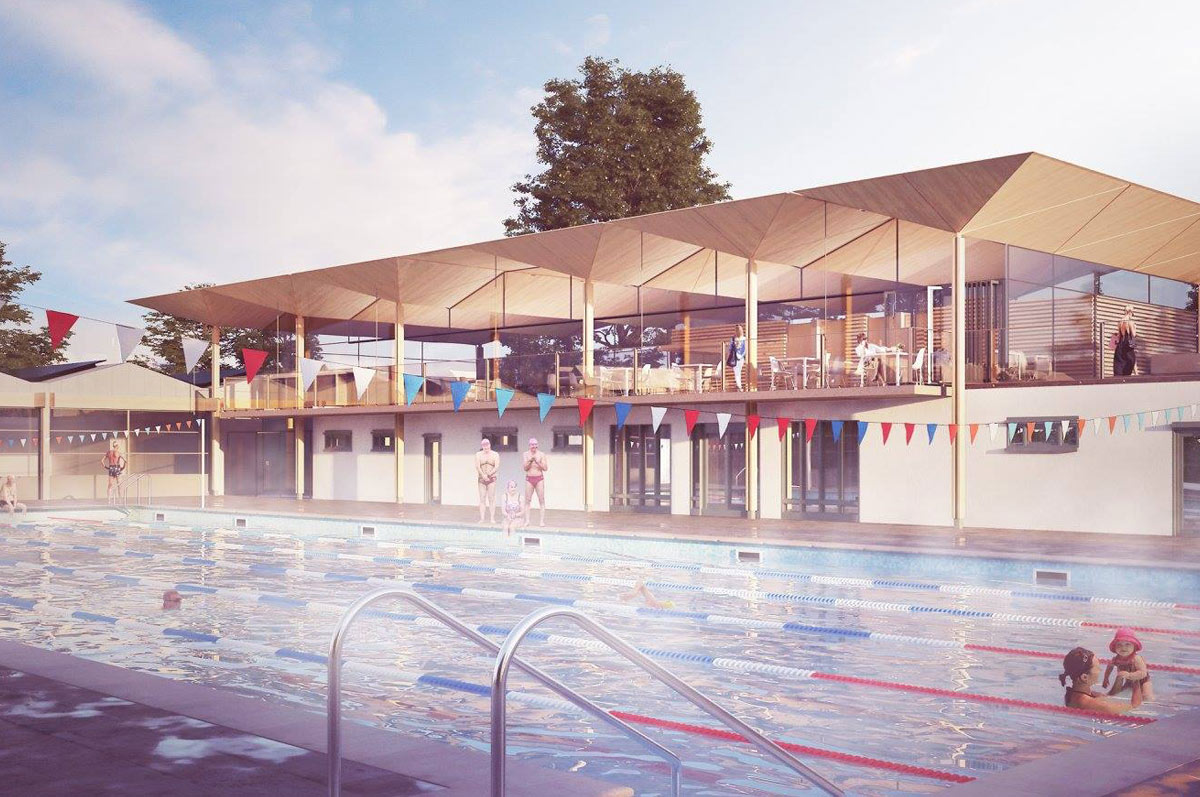The Case for Improvements Summary
“While leisure centre and swimming pool numbers contracted only marginally between 2013 and 2015, the replacement of ageing facilities with new stock has not just helped support admission numbers but also grown ancillary revenues through improved environments that encourage longer dwell times.” Mintel report: Leisure Centres and Swimming Pools UK, September 2015
The case for improved changing facilities for all users
Status of the current changing facilities:
- Dedicated male and female changing areas mean that both girls and boys under 8 must use the same single-sex designated area as either the mother or father.
- According to the NSPCC, a single open changing area creates a safeguarding ‘risk’ for teachers during school lessons and galas.
- We currently ‘under provide’ for family/group change, according to recommendations in Sport England’s Affordable Community Swimming Pools report.
- The changing facilities are not ‘fit-for-purpose’ for wheelchair users or anyone with mobility issues. We currently have one Disabled changing room that doubles as the only cubicle available for family changing or for baby change.
- We have no facilities for anyone who is gender neutral.
Proposed improvements:
- We will retain dedicated male and female change but will add a ‘changing village’.
- The new facilities will comply with safeguarding recommendations that adults and children should change in separate places and that additional unisex family changing should be provided.
- The ‘changing village’ will allow children to change either on their own or with parents in their own cubicle.
- The new facilities will be fully accessible and Equality Act compliant.
- More inclusive, gender neutral facilities will be available.
Background in Safeguarding
The new facilities need to be fit for use by children, families and the wider community. This requires the introduction of family 'cubicle' change and showering facilities alongside the existing dedicated male and female change. Current expectations from parents is that facilities should allow parents & carers to take the children into private change facilities where they can change discreetly.
Advice from the NSPCC regarding groups of children (in our case, usually school groups) states: “Ideally groups of children and young people should have sole use of changing facilities. This obviates any risks and potential vulnerability associated with mixing with adults or other young people (known or unknown to them) when changing and showering. Even when using public facilities, arrangements can be considered to address any potential concerns: separate room/facility available for the group”.
At present, the current male and female change facilities require dads to take their girls and boys up to the age of 8 into the male change where they will need to change in front of other older men and, likewise, women are taking their girls and boys into the ladies changing room. Each of the current changing rooms comprise of one large, communal room that everybody changes in together. This means that when there are school galas or swimming lessons the teachers need to supervise the changing rooms and therefore the teachers put themselves at risk.
Safeguarding best practice now expects that adults and children should change in separate places. For example, the Football Association's guidance reads "Where facilities are used by both adults and children at the same time there must access to separate changing, showering and toilet areas. Adult staff/volunteers must not change or shower at the same time as children and young people using the same facilities” Sport England’s design guidance note on ‘Fitness and Exercise Spaces, 2008’ states junior activities or youth gyms may require separate changing facilities, and consideration should also be given to the provision of additional unisex family changing.
The proposed introduction of a changing village means that children can change in a cubicle, either on their own or with parents. This immediately removes the risk of open changing and ensures that parents are responsible for their own children. A changing village requires more space than open changing and therefore increased space needs to be found in the building footprint to accommodate this.
Background in Equality Act compliance and social inclusivity
As well as addressing safeguarding concerns, the introduction of cubicle change allows for a more inclusive service meaning that those with mobility issues would be able to use the facilities more freely. Whilst Hampton Pool Trust recognises that swimming for those with a disability is a great form of exercise and has poolside facilities to support this, the current changing rooms are not fit-for-purpose for those in a wheelchair or with mobility issues. There is currently only one disabled changing room, so the introduction of additional cubicle changing and disabled changing facilities will give a greater range of options to suit a variety of disability and mobility needs.
Sport England’s advice is that “Accessibility needs careful consideration. Many people with disabilities regularly attend fitness gyms and may be with carers or personal assistants of the opposite sex. It is therefore essential to provide individual unisex accessible changing rooms in addition to providing full access to the larger single sex changing rooms”.
In addition to providing improved accessibility, it is also important to focus on delivering more inclusive facilities. Not all people identify as ‘male’ or ‘female’ or feel happy using either ‘male’ or ‘female’ facilities. LGBTQ charity, Stonewall, recognises the best practice where “schools are taking steps to provide ‘gender neutral’ facilities – irrespective of whether there are trans young people in school – to help create a more inclusive environment for everyone”.
The introduction of cubicle change at the pool would therefore allow people to change in a safe, secure environment with no discrimination, whilst retaining single sex changing that meets the needs of many of our users.
Evidence: The Equality Act 2010
“Swimming is one of the nation’s most popular physical activities that can be enjoyed by people of all ages and abilities. It is recognised as being uniquely beneficial to the nation’s health and well-being and is ideally suited to people with disabilities and the elderly or infirm who might have difficulties with other forms of exercise.”
Sport England’s ‘Affordable Community Swimming Pools’ guidance document, 2012
The case for a more accessible gym
Status of the current gym and studio:
- The gym is cramped, with the machines difficult to access, especially for anybody with disabilities.
- At only 2.7 metres of space-per-station, the gym does not comply with latest Sport England recommendations for accessibility.
- The studio is very small, class sizes are limited to approximately 10 people and are oversubscribed on a frequent basis.
Proposed improvements:
- Increasing the footprint of the gym to approximately 200 square metres would accommodate an additional 15 stations and would be fully accessible and Equality Act compliant for all.
- 5 square metres of space-per-station will meet Sport England’s recommendations.
- A bigger variety of machines or empty floor space will protect the facility against changes in future exercise trends.
- Improved facilities are likely to increase usage, especially by younger age groups.
Background
The current gym measures approximately 75 square metres with 25 stations (work areas or machines) and was created by partitioning off the old female changing room back in the 1990s. It proved successful and was refurbished in 2007 to its current configuration. The gym has proved immensely popular with users, but it is cramped and does not comply with latest Sport England recommendations for space-per-station and accessibility.
The studio (created by reducing the male changing room back in 2006), was created to expand the dry-side offering and is used for Yoga, Pilates Spin, etc. However, at 43 square metres (including storage space) it is very small and class sizes are limited to approximately 10 people. Sport England recommend the minimum size for a studio to be 112 square metres to make it viable and cost effective to operate. Currently, classes at Hampton Pool are often oversubscribed or crowded, with people regularly being turned away.
The new gym will have a footprint of approximately 200 square metres and will be fully accessible and Equality Act compliant for all members of the community. Although this is over double the size of the current gym, once the machines are laid out to the current recommended spacing of 5 square metre per station (as opposed to the current 2.7 square metre per station) there would only be a modest increase in stations from 25 to 40. This will allow us to provide a greater variety of machines or more floor space to future proof the facility and changes in exercise trends.
The improved gym will enable existing customers to continue to enjoy exercising at Hampton Pool, a location of their choice, in less cramped conditions. It will also allow disabled access which has previously been thwarted by the lack of space around the stations and the size of the studio.
The gym has been unique in pioneering ‘Club 1315’ encouraging young people aged 13-15 to stay exercising in a hard-to-reach age group – improved facilities are likely to further increase usage by this age group.
Hampton Pool provides exercise classes for those with disabilities to provide opportunities for social interaction, something that can be extended following the improvements to the facility.
Evidence:
- Sport England: ‘Fitness and Exercise Spaces’ Design Guidance Note, Updated 2008
- Sport England: ‘Affordable Sports Centres with Community 25m Pool options’
- Sport England Case Study: Forest Hill Pools, London
The case for an improved café and covered seating area
Status of the current café and seating areas:
- The kitchen and café are not Equality Act compliant, with accessibility restrictions through all doors (a step down into the café) and stairs-only access from the ground floor.
- There is limited space in the café and kitchen. The café currently has indoor bar-style seating for just six people, with no view of the pool.
- There is nowhere for parents to sit comfortably with a view of their children during swimming lessons in inclement weather.
- Whilst risk assessments and mitigating remedial actions have been taken over the years, the sundeck has a stepped ‘viewing platform’ with a low wall and insufficient metal barrier, creating a significant fall hazard.
Proposed improvements:
- We will install a lift to provide access for all to the first floor.
- The café’s kitchen and indoor seating areas will be extended and improved.
- An improved café with extended covered seating area would increase usage and revenue and would provide parents with a safer, warmer platform from which to watch their children.
- The viewing deck’s trip hazard will be removed by widening the stepped area and reducing the depth of the step down.
- The low wall and metal barrier on the viewing deck with be replaced by an architectural glass barrier.
Evidence:
- Sport England: ‘Affordable Community Swimming Pools’ recommendations
The case for improved ancillary areas and working conditions for our staff
Status of the current ancillary and staff areas:
- The staff room is a cramped 10 metres and does not provide adequate space for lifeguards to relax so that they can return to a duty that requires high levels of concentration and vigilance. It is not accessible by wheelchair.
- There are no dedicated changing areas for staff.
- There is no warm room for staff to use after they’ve been in the water or on duty in the rain.
- The manager’s office is currently 8 square metres and accommodates four desks plus storage. It is not wheelchair friendly.
- There is currently no first aid room.
- The car park has fallen into disrepair and the flow of pedestrians through the area is unsatisfactory.
- There are insufficient secure bike racks.
Proposed improvements:
- All new facilities will be fully accessible.
- Inclusion of a dedicated changing facility for staff.
- A dedicated First Aid room.
- The car park will be resurfaced and marked with spaces for 47 cars.
- Secure cycle storage for 37 bikes will be included within the car park area.
- A clear walkway for pedestrians will improve the flow of walking traffic through the car park.
- A new meeting space adjacent to the café on the first floor.
Background
There is a need to improve the working conditions for staff. These requirements are not merely ‘nice to have’ extras but are increasingly important to ensure we have a safe and healthy work environment for the increasing number of swim teachers and lifeguards, as well as making sure that they are Equality Act compliant.
Swim teachers might spend several hours in the pool in the morning and then need to be back after lunch. At present they are required to change with the public, including children (not recognised best practice), before then waiting in a public area for their next lesson. Lifeguards are on duty during inclement weather and their kit can get wet and they lose body heat. The introduction of a warm room means that they are able to get dry and warm before going back out of shift. Currently the sauna is used which is not the purpose it is intended for.
There is currently no first aid room and emergencies must be dealt with using limited temporary screening or by vacating an office.
The car park needs resurfacing and traffic and pedestrian flows need to be improved. The aim is to rebuild the bed of the carpark and surface it with environmentally friendly materials. Traffic and pedestrian flows have been designed to provide solutions to the problems identified. Additional secure bike storage racks have also been included within the scheme; customers will be encouraged to visit the facility by bike if possible.
Evidence:
- Sport England: ‘Affordable Community Swimming Pools’ guidance document, 2012
- HSE: Separating pedestrians and vehicles
- HSE: Guidance on First Aid provision
The case for improved sustainability
Status of the current facilities:
- The current main pool ‘plant’ – the filtration and fixed speed pumps – are old and inefficient. Half the plant, installed in 1939, is nearly 80 years old and the second half, installed in 1959, is nearly 60.
Proposed improvements:
- Modern vertical sand filter filtration equipment will improve filtration and reduce water usage and at the same time improve water condition.
- Modern variable-speed pumps and digital control systems will modulate flow-rates according to bather load and requirements. The variable-speed pumps are energy efficient and power savings will be made by operating the pumps at a reduced optimum speed.
- The replacement of the current pool water heating system with new, energy efficient, condensing boiler technology and controls will reduce gas consumption. The inclusion of UV water treatment will reduce the risk of Cryptosporidium bacteria and allow the pools to be operated at lower chlorine levels.
- Base load electrical power usage will be provided by a combined heat and power (CHP) unit generating both electricity and providing secondary heat for the swimming pool water. Daytime energy usage will be augmented by the roof-mounted solar-thermal photo-voltaic (PV) panels, with National Grid power used as backup and for night usage.
- Hot water for showers will be augmented by roof-mounted solar-thermal photo-voltaic (PV) panels.
- The new plantroom incorporates part of the existing plant room footprint and is extended onto currently unused derelict land. This frees up prime poolside land for customer use, representing a more efficient and improved use of the site. By creating a new footprint for the plant room, the pool can maintain current operations whilst the new room is built and commissioned, with minimal downtime for changeover to the new plant equipment.
Evidence:
- Max Fordham report
Supporting information:
- The scheme has been developed within the LBRuT Strategic Principles for Sport and Fitness 2014 and 2018
- Mintel report on Leisure Centres and Swimming Pools UK September 2015
- One to two members of LBRuT Sports Development Team have been members of the Hampton Pool Consultative Group throughout the development of the plan



